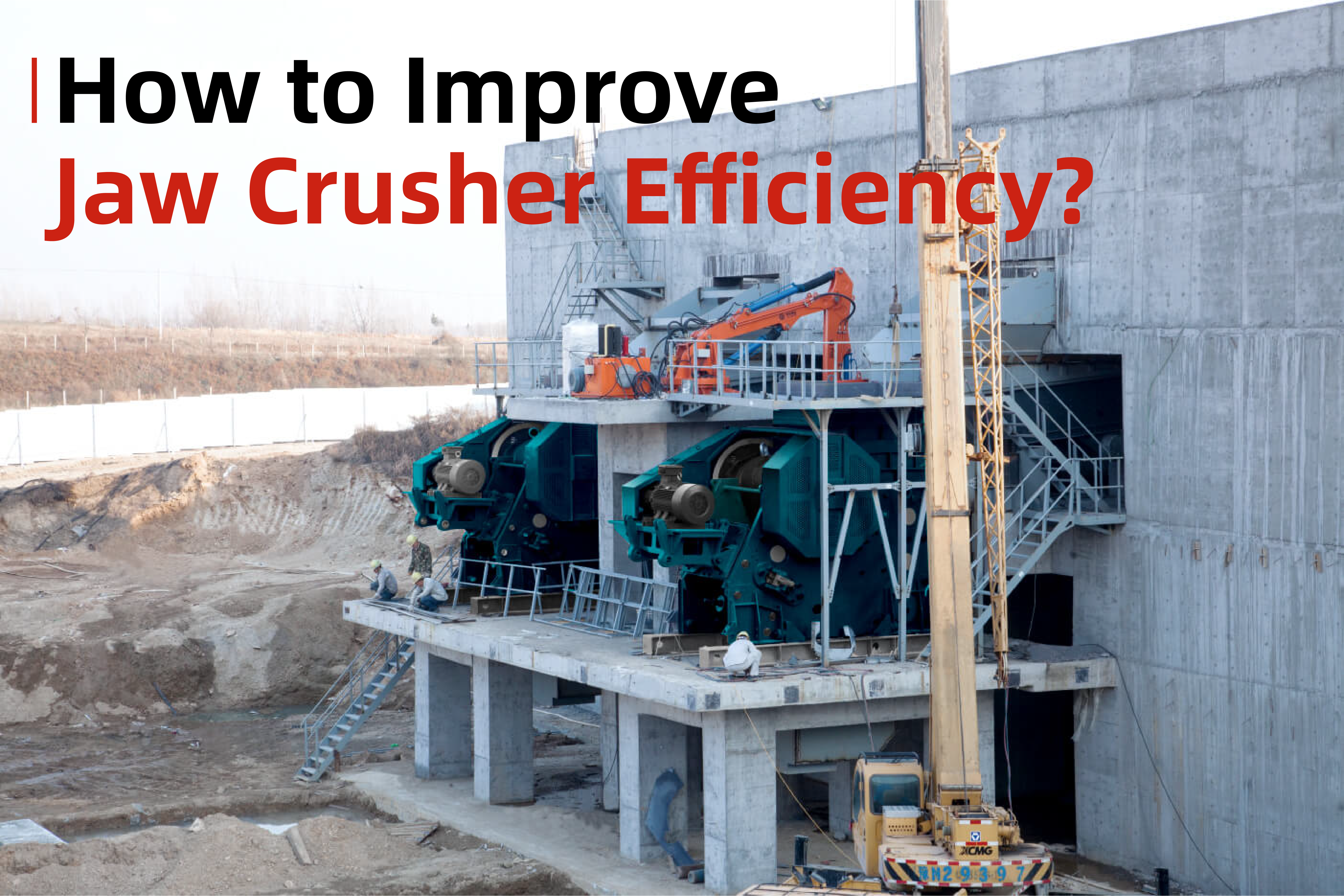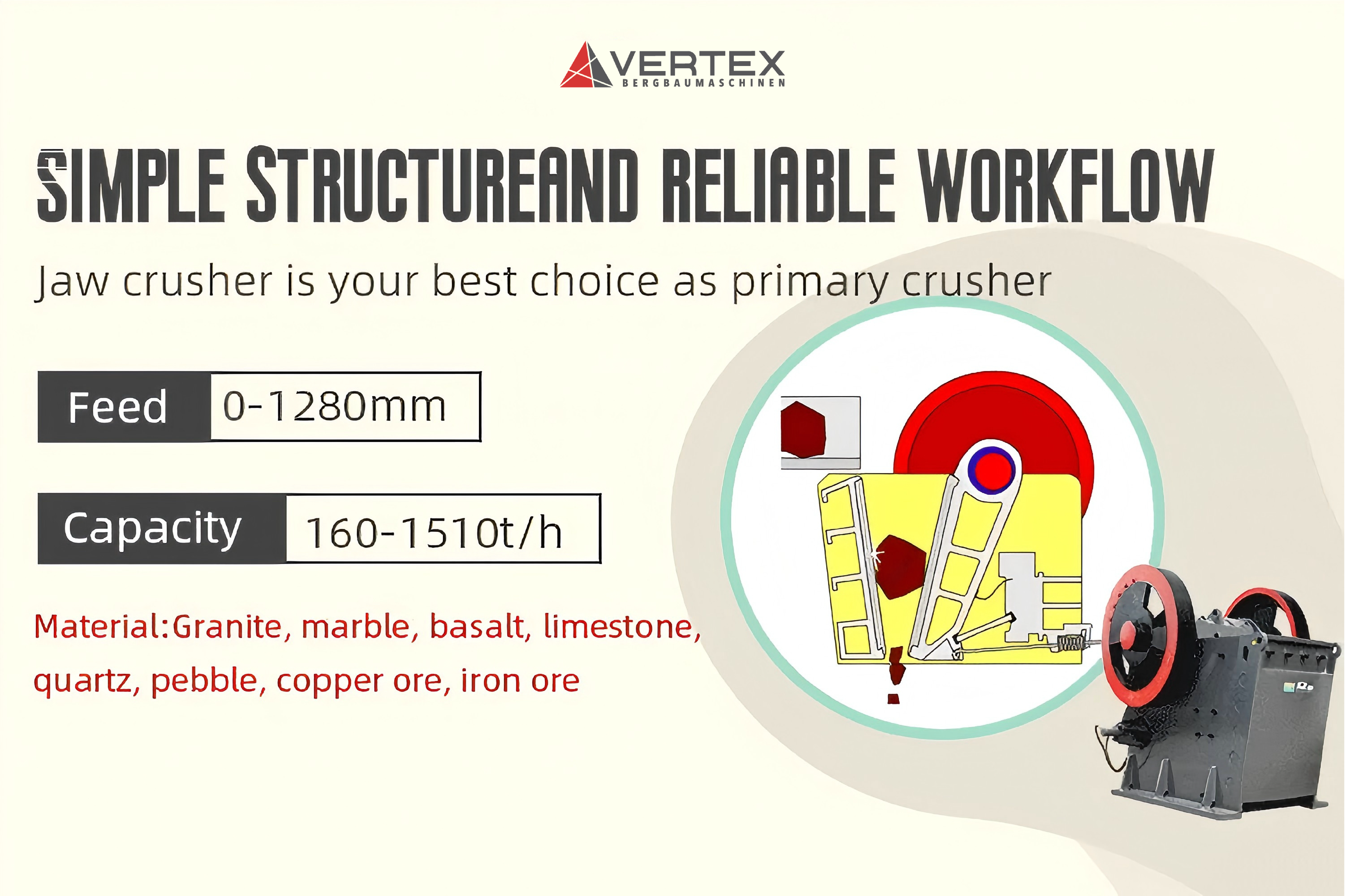
When producing a large quantity of aggregate products, the efficiency of jaw crushers is of great significance. Crushing stone requires a large amount of energy and heavy-duty equipment, and the costs of both need to be balanced against the value they create. As the most commonly used primary crusher in quarries, the performance of jaw crushers directly affects the efficiency of the entire production line. This article will analyze practical methods to improve efficiency from the dimensions of feeding control, parameter adjustment, and maintenance strategies.
Jaw crushers are famous for the extrusion crushing principle. They are good at handling hard materials with a compressive strength ≤ 320 MPa (such as granite and basalt). The V-shaped crushing chamber design makes them the first choice for primary crushing in mines. As a primary crusher, it undertakes the key task of crushing 1,500 mm raw ore to 60–300 mm, providing qualified feed for subsequent medium and fine crushing equipment.
Operation Key Points: Fill the crushing chamber with materials, and the material layer height reaches more than 2/3 of the chamber depth.
Advantages: Increase production capacity by 15–25%, and use "stone-on-stone" crushing to reduce flaky particles.
Disadvantages: Increase the fine powder rate by 30%, and need to match the processing capacity of the secondary crusher.
Application Scenarios: When coarse particles (> 200 mm) need to be retained.
Cost: Reduce production capacity by 15–20%, and easily cause local wear of the jaw plate.
Bridging is caused by oversize particles (> 3 times the discharge opening) or long strip materials jamming the crushing chamber. Single handling takes 5–10 minutes, resulting in a production loss of 50–100 STPH.
Blasting Control: The rock size More that 80% of the feed opening width (for example, for a 1,000 mm feed opening, the stone ≤ 800 mm).
Equipment Modification: Install an air cannon at 1/3 height of the crushing chamber with an air pressure of 0.6–0.8 MPa.
Ideal Crushing Ratio: 8:1 (for hard materials) or 6:1 (for soft materials).
Closed-Side Width (CSS) Formula:CSS = Target Particle Size × 1.6
Example: Target 50 mm finished product → CSS = 80 mm
Nip Angle:18°–22° is the safe range, and exceeding 24°will cause material slipping ("boiling phenomenon").
The material of the jaw plate directly affects the service life and particle shape:
High-Manganese Steel (Mn18Cr2): Suitable for hard materials such as granite, with a service life of 8,000–12,000 hours.
Tungsten Carbide Coating: Used for concrete waste, with 100% improved wear resistance.
Replacement Signals:Tooth height wear > 50%.
Flaky particles in the finished product > 25%.
Production decline > 20% under the same working conditions.

Installing a frequency converter can adjust the speed dynamically according to the load:
Hard Material Crushing: 250–300 RPM (low speed reduces energy consumption).
Soft Material Crushing: 350–400 RPM (high speed increases production capacity).
Power Saving Effect: Save 15–20% of electricity under light load, with an investment payback period of 1–2 years.
The flywheel inertia needs to match the motor power:
Flywheel Inertia (kg·m²) = Motor Power (kW) × 0.8
Example: A 200 kW motor needs a 160 kg·m² flywheel to reduce no-load
energy consumption by 5%.
Daily: Check the torque of jaw plate bolts (1,200–1,500 N·m), and measure the bearing temperature (More that 70℃).
Weekly: Clean the accumulated material in the crushing chamber, and check the deflection of the transmission belt (10–15 mm).
Monthly: Calibrate the vibration sensor and test the pressure of the hydraulic system.
Main shaft concentricity calibration (deviation MOre that 0.1 mm).
Bearing clearance adjustment (axial clearance 0.2–0.5 mm).
Jaw plate lining wear detection (replace when unilateral wear > 3 mm).

Deploy vibration sensors and laser rangefinders for real-time monitoring:
Bearing status (alarm when vibration > 5 mm/s RMS).
Jaw plate wear (push replacement reminder when unilateral wear > 30%).
Identify material hardness (Protodyakonov coefficient) through AI and automatically adjust CSS:
Hard Material (f > 15): CSS = Target Particle Size × 1.8.
Soft Material (f ≤ 10): CSS = Target Particle Size × 1.4.
aw plate wear (measured with a depth gauge).
Feeding stability (adjust if the ammeter fluctuation > 10%).
Discharge opening blockage (reverse the motor + manual assistance for cleaning).
Moisture ≤ 8%: Normal crushing, clean the chamber wall weekly.
Moisture > 8%: Install an electric heating lining (40–50℃) to prevent material adhesion.
The efficiency optimization of jaw crushers is a systematic project: stable feeding is the foundation, precise parameters are the core, and in-place maintenance is the guarantee. With the optimization scheme provided by Vertex Bergbaumaschinen, a certain quarry has achieved comprehensive benefits of a 22% increase in production capacity, an 18% reduction in energy consumption, and a 50% extension of the jaw plate service life. Immediately contact Vertex Bergbaumaschinen to obtain an exclusive efficiency diagnosis scheme, and let us use professional technology to help you unleash the maximum efficiency of the equipment!